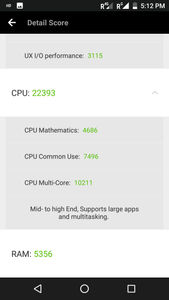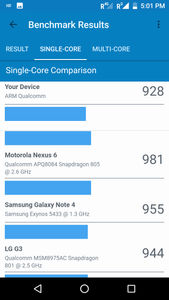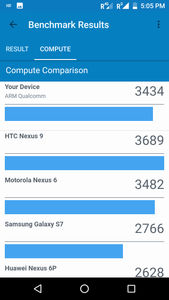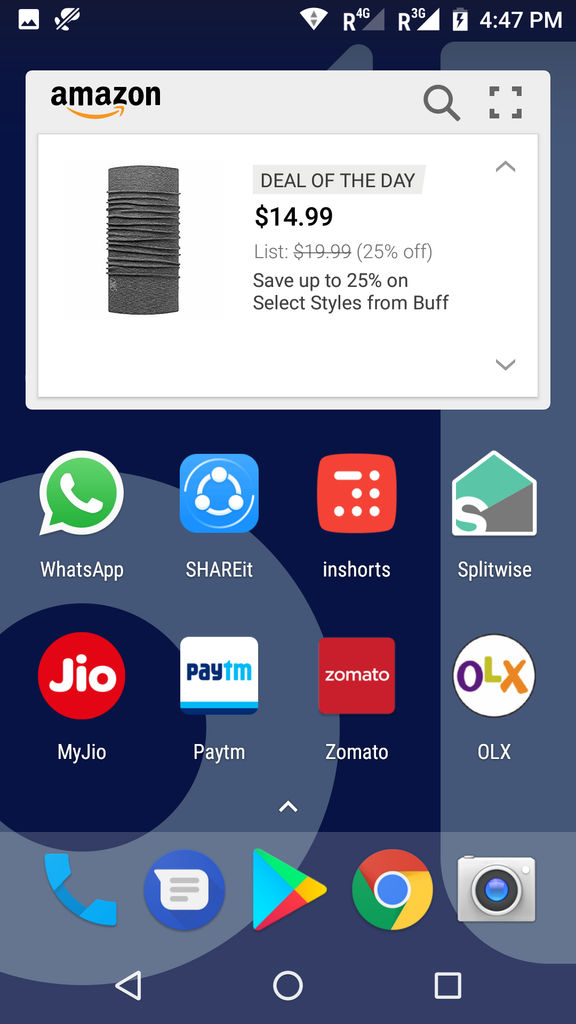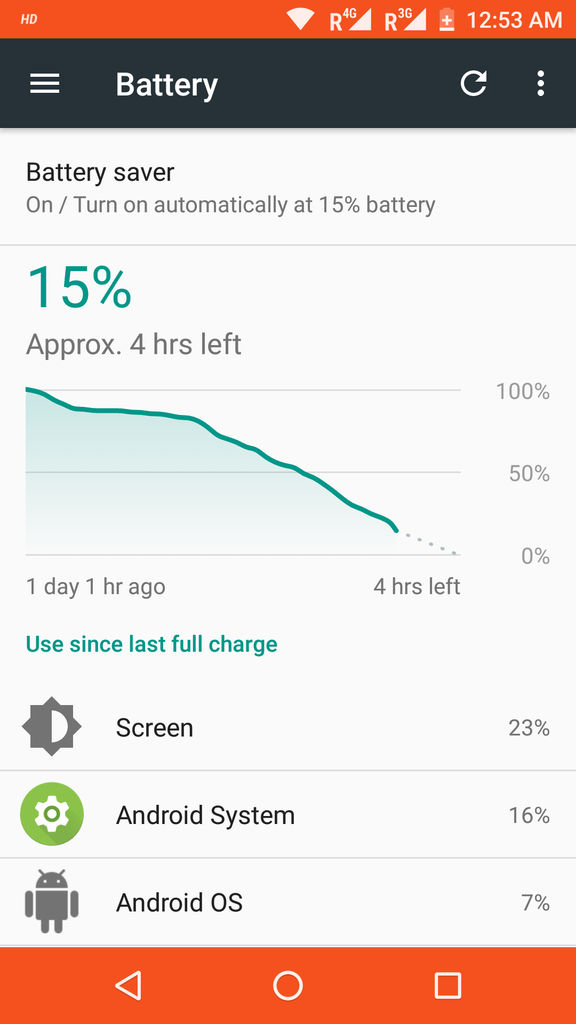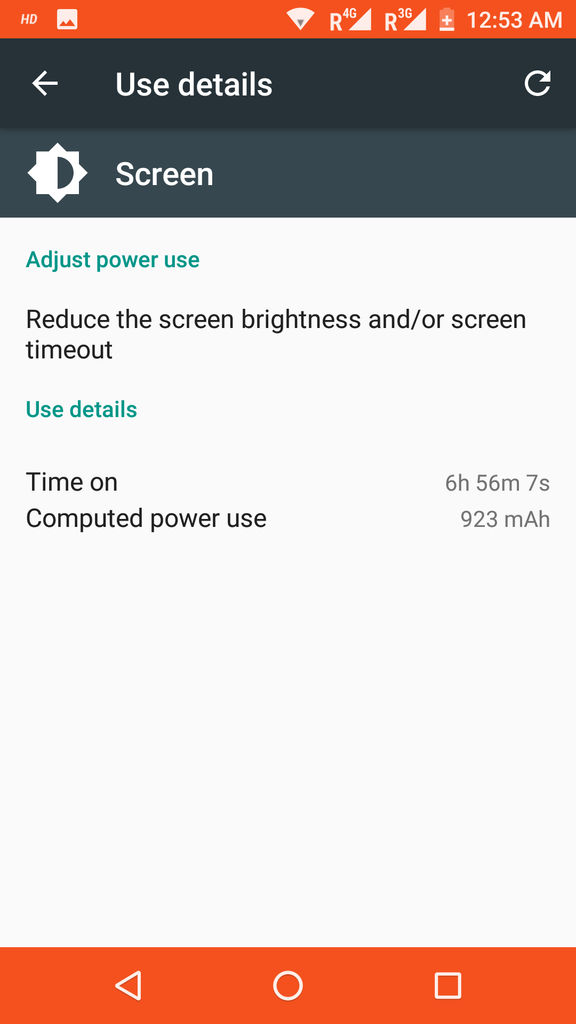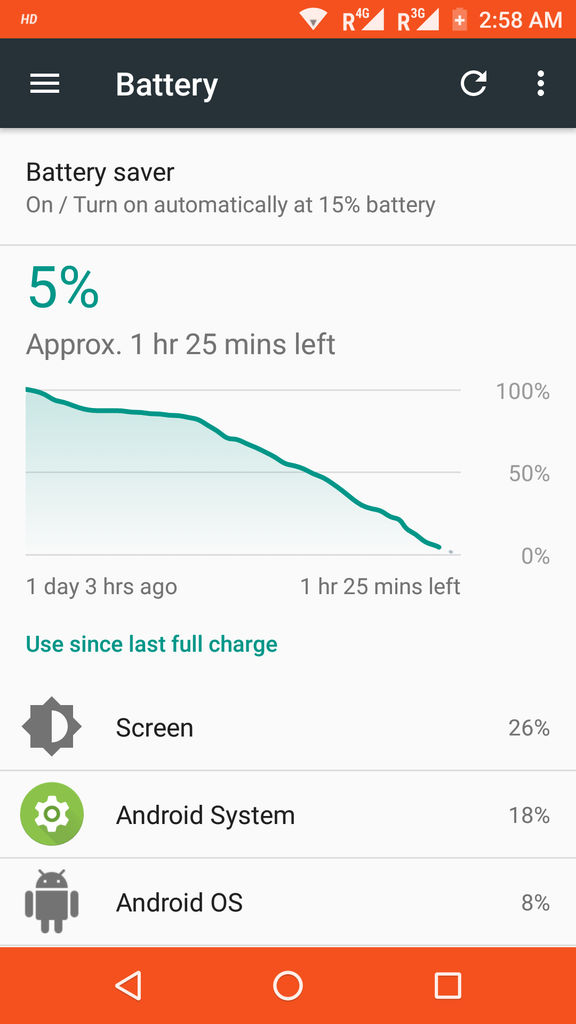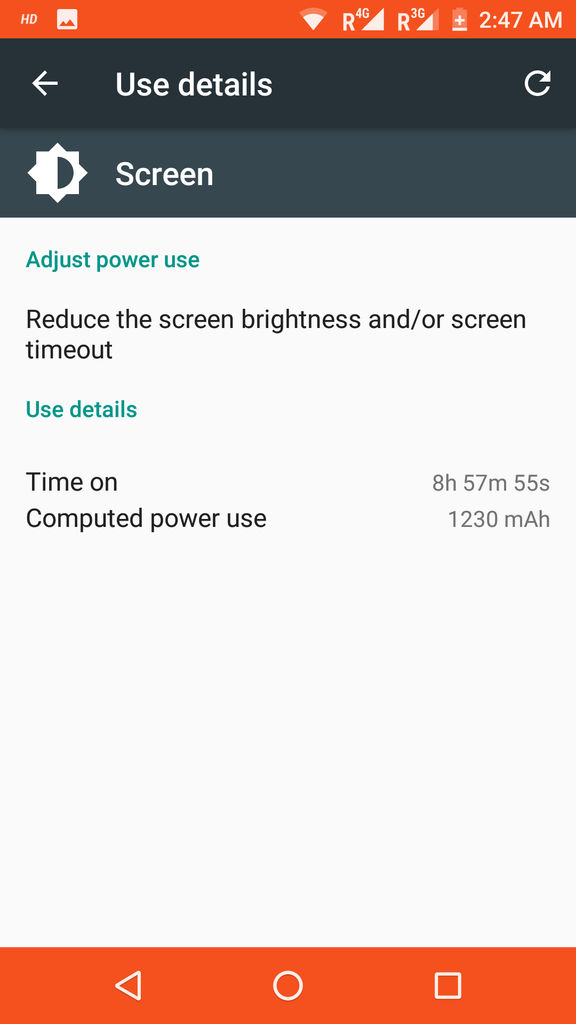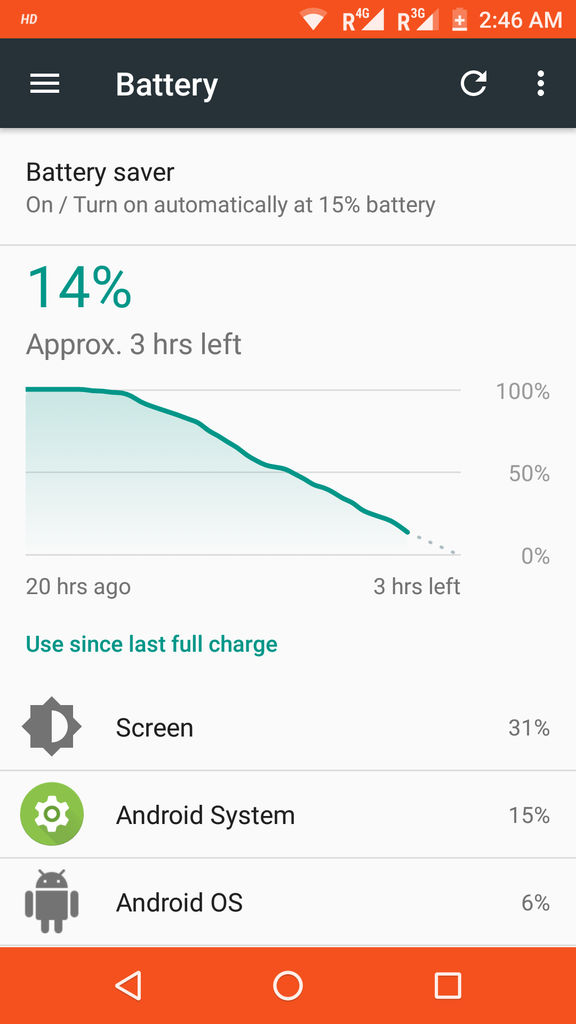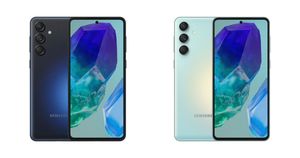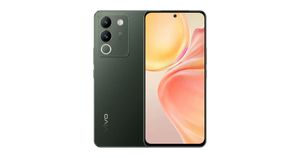
Before getting on with the review, I’m going to address it right away: the name. Yes, I am aware what it sounds like and I’m just as amused as you are. What baffles me is the fact that at some point, there was a meeting at some corporate office, a meeting comprised of what I’m hoping to be literate adults who collectively decided to call a device 10.or G. Or maybe it was it a deliberate bid to capture people’s attention. I’m going to assume that since 10.or (pronounced Tenor) is a Chinese company, their understanding of English is limited and they might not be aware of what the name sounds like.
Now that we have that out of the way, let’s get to the actual device. The 10.or G is the second device released by 10.or and is a successor to the 10.or E (which is really good, by the way). It is an Amazon exclusive phone and comes in two variants: one with 3GB of RAM and 32GB internal storage and the other with 4GB of RAM and 64GB internal storage. Today, we’ll be taking a deeper look at the 4GB/64GB variant. Without further ado, let’s go through the specifications to see what the device brings to the table:
- Display: 5.5-inch IPS LCD panel with a resolution of 1920×1080 (401 ppi pixel density), protected by a layer of Corning Gorilla Glass 3.
- Processor: Octa-core Qualcomm Snapdragon 626 clocked at 2.3Ghz.
- Memory: 64GB of internal storage, expandable up to 128GB via microSD card/4GB of RAM.
- Primary Camera: 13+13 megapixels dual cameras with a CMOS image sensor, Phase Detection autofocus, dual-tone LED flash, HDR, and panorama mode.
- Secondary Camera: 16 megapixels with LED Flash and facial recognition.
- Battery: Non-removable 4000mAh Li-Pol battery.
- Dimensions and Body: 155x76x9mm (length x width x thickness), 170g metal body with 2.5D glass.
- Connectivity: Dual-SIM with 4G, Bluetooth, GPS, 802.11 b/g/n WiFi and a micro USB port.
Looking at the spec sheet initially, it’ll seem like it’s too good to be true and something isn’t quite right with the device. One can even go as far as saying that it has the potential to dethrone the king of the mid-range segment, the Xiaomi Redmi Note 4. But it lacks critical features such as an IR blaster (which comes standard on all Xiaomi phones) and USB OTG, not to mention that MIUI is extremely user friendly and comes with a host of features/applications that greatly enhance the end-user experience. However, the 10.or G would be a better choice for stock Android enthusiasts such as myself, who prefer a clean, bloatware-free OS.
10.or G: Design and build quality
The 10.or G costs more than the 10.or E, and as you’d imagine the design is much better. The design aesthetic should be immediately familiar if you’ve used the Redmi Note 3 in the past. The nearly all-metal with a dash of polycarbonate body feels sturdier, but it does make the phone feel a tad heavier than the 10.or E. The 2.5D curved glass makes for a pleasant typing experience, but at the same time, the phone smudges very easily. You’re better off carrying a microfibre cloth with you at all times if you’re one who likes a smudge-free screen.
The Corning Gorilla Glass 3 adds a layer of protection and keeps the panel protected from the occasional scratch or two resulting from rough usage. The device survived several drops from a variety of heights on a variety of surfaces, with not so much as a scratch or a blemish.
The button placement is exactly the same as the 10.or E, with the power button and the volume rockers situated at the right edge of the body. I was really disappointed to find out that the 10.or G did away with the dedicated microSD card slot and went with a hybrid SIM slot instead. The SIM/microSD card slot is located at the left edge of the device and has to be extracted using the included pin. The 3.5mm port (enjoy it while it lasts) is on the top edge of the device while the dual speakers (yes!) and the micro USB port are at the bottom. The speakers are definitely an upgrade over the ones in the 10.or E, in the sense that you can actually hear them.
As mentioned earlier, the all-metal body does feel a lot sturdier, but I’d still recommend getting a case for the phone as I’ve had more than my fair share of near-misses while handling the device. This can be attributed to the rounded edges and the extra smooth finish of the body, which lowers friction, thereby reducing grip. One-handed operation of the device shouldn’t be a trouble for most people as the phone fits perfectly into the palms, but those with smaller hands will have an issue. Another reason I would recommend using the device with a case is due to the fact that the rear cameras stick out a little, making them susceptible to damage when dropped.
10.or G: Display
The 10.or G has a 5.5-inch IPS LCD panel with a resolution of 1920×1080 and a pixel density of 401-ppi. You’ll have to adjust the viewing angle or squint a little to read text clearly under bright sunlight, but in all other scenarios, the screen is serviceable. The colour reproduction of the display is average as it could barely distinguish between the blackest of blacks and the whitest of whites. Honestly, I didn’t expect a whole lot out of an IPS LCD panel, which performed more or less as per my expectations. Thankfully, there was no pixelation or loss in image quality when the font/icon size was changed via the UI.
To determine the actual colour reproduction of the display, I ran a few colour-rich Full HD videos on YouTube, the images of which you can see below. The panel could flawlessly reproduce a gamut of hues of different colours and smoothly transition between frames, making for a cinematic viewing experience devoid of any framing/tearing. This was a welcome surprise.
10.or G: Performance
The 10.or G runs an octa-core Qualcomm Snapdragon 626 processor clocked at 2.3GHz along with 4GB of RAM, which is a step above the dated Snapdragon 430 chipset used in the 10.or E. The UI is fluid and navigation is devoid of any delay or stutters. There is negligible input lag, allowing you to type/swipe without the fear of losing a keystroke. Switching between apps is no trouble at all, with near-instant transition time.
In a bid to push the device to its limits, I decided to open about twenty-five of the most resource heavy apps I had on my phone (mostly stuff such as Facebook, Messenger, Word and Maps), to check if it affected the performance in any way. Thankfully, it didn’t. The 4GB of RAM coupled with the Snapdragon 626 on the phone is more than adequate to handle anything you throw at it.
What disappointed me a little was the inaccuracy of the rear-mounted fingerprint sensor, which failed to correctly recognize my fingerprints seven times out of ten. To make the sensor correctly detect my fingerprint, I had to slowly align my finger in a very specific position, something that simply isn’t feasible most of the times. Honestly, you’re better off using a PIN or a pattern to unlock your phone. The fingerprint sensor on the 10.or G seems more like a cosmetic and a spec sheet filler, rather than a reliable method of unlocking the device.
To test the gaming capabilities of the device, I fired up Gameloft’s Asphalt 8: Airborne and Modern Combat 5. Both games ran well for the most part on max settings, but I did observe jitter for a few frames and animation skips every now and then. I could easily push Modern Combat 5 up to 60 fps without any qualms. Much to my surprise, Supercell’s Clash Royale continued to experience micro stutters and frame rate loss. At this point, I think it’s due to the lack of optimization rather than underpowered hardware.
It is worth noting that the device does heat up after ten or so minutes of gaming, with temps reaching values as high as 45 degrees at times. However, there’s nothing to worry about, as it is perfectly normal for a device to generate heat when the hardware is pushed to its limits. The all-metal body conducts the heat, making the body feel hotter than it already is.
10.or G: Camera
Dual cameras are officially the latest marketing gimmick employed by companies to sell devices. Are the dual cameras on the 10.or G legit or just another form of hardware clickbait? Let’s find out. The primary cameras are 13+13 megapixels with dedicated RGB and monochrome sensors, along with a 1.4-micrometre pixel size, Phase Detection autofocus, dual-tone LED flash, continuous shooting, HDR and panorama along with a CMOS sensor and a f/2.0 lens. Once again, Amazon’s page claims that it can record 4k videos at 30 fps, but all I could find was 1080p 60 fps.
The quality of videos shot at 1080p 60 fps are clear and noise-free, but you need a steady pair of hands, as the inbuilt image stabilization isn’t compatible with 60 fps. The lens tends to constantly refocus if you move the camera around, which results in motion blur. One of the biggest problems I’ve had with the camera is the fact that is flat-out refuses to record the last five to seven seconds of video in a 30-second clip shot at 60 fps, regardless of resolution. This can be attributed to poor software optimization and the fact that the Snapdragon 626 doesn’t do well with 60 fps. Why 10.or decided to include the feature anyway is beyond me. Setting aside that glaring flaw, the 30-fps performance of the cameras is slightly better, thanks to image stabilization.
The 13+13 megapixel dual cameras come with dual-tone LED flash, which greatly improves the quality of low light images. The flash could illuminate the darkest of corners, allowing the sensor to capture minute details to recreate an almost non-grainy, clear image. However, under pitch dark conditions, the quality of the images declines remarkably, with a significant amount of visible grains in the image.
For the most part, the auto mode does an excellent job of changing the camera settings according to the ambient light, except under very specific circumstances. The primary cameras can create a bokeh effect using the dual sensors, by using the dedicated button included in the camera UI. After clicking the photo, there is an option to select the focal point and a slider to adjust the magnitude of the blur. The image processor of the camera is near instantaneous, with even HDR images taking no more than two seconds to render.
After the disappointing video performance of the device, I was skeptical about the secondary camera, despite the fact that it is 16-megapixels with a f/2.0 lens and LED flash. Thankfully, the secondary camera exceeded my expectations (I didn’t have a lot of them, to begin with, but still). The daylight performance of the secondary camera surpassed the performance of the primary camera in some ways, with accurate skin tone reproduction under several lighting conditions. The sensor could capture minute facial features such as creases and contours, which are otherwise not visible to the naked eye. Under low-light conditions, the images retain their quality, owing to the LED flash and the relatively wide aperture lens.
10.or G: Audio and connectivity
The inclusion of dual speakers was a welcome and much-needed change in the 10.or G, as the speaker on the E variant was absolutely atrocious. Everything, ranging from soft mellotron sounds to phone calls were audible, even with a drill operating in the background. The dual-speakers are a little light on the bass and tend to output a more shrill, treble-heavy sounds, but that’s ok, considering that they are rarely used to play music.
The quality of audio over phone calls was nothing exemplary. The audio sounded nearly identical over VoLTE and 3G networks. I did have some trouble getting network reception in a few areas, but it was mostly indoors. Throughput over LTE capped out at around 20Mbps, tested over a span of a week, at different times of the day, at several locations.
The phone supports 4G on both SIM card slots, unlike the 10.or E, which only supported 3G on the second SIM. Thankfully, the 10.or G is compatible with VoLTE as well, and I could easily make/receive calls over the Jio network. However, there is an annoying “HD” icon plastered at the top left corner of the notification bar indicating that the device compatible with VoLTE, and there’s no way to get rid of it.
The device lacks a 5GHz radio, so all WiFi connectivity is restricted to the rather congested 2.4GHz radio. Throughput over wireless maxed out around the 40-50Mbps mark, which I reckon should be enough for most applications. The wireless link established by the device was strong and it remained connected to a network four stories above me, retaining nearly half the signal strength.
10.or G: Software and UI
Much to my delight, the 10.or G runs a stock bloatware-free version of Android Nougat 7.0. Other than Amazon Shopping, Prime Video, Kindle and a native diagnostic app, the device is free from any bloatware. Like the 10.or E, the home screen has an Amazon widget that shows you random stuff off of the internet, presumably linked to the Amazon US website, as the prices are listed in USD as opposed to INR.
The diagnostic app is neat and does an excellent job of diagnosing your device end-to-end, even giving you an estimate of how much it would cost to get it fixed. The cost estimation, however, does not consider the price of the actual part being replaced and only quotes labour charges, which is reset to zero if your device is under warranty. Clearly, this was a half-baked attempt to make a native diagnostic app and it could have been done better.
The home screen has the barebones Material Design user interface. The app drawer can be accessed by swiping up an arrow right above the dock, much like the Pixels. The UI is clean and offers a complete stock Android experience with zero bloatware, and it is a delight to use the phone on a daily basis. Another notable feature of the 10.or G is the integration of Google Assistant, which can be accessed by long pressing the home button. The response time is quick and it can recognize a variety of basic commands in different Indian accents. You can issue commands such as “set a timer”, “call mom” or “text dad” and the Assistant will take care of the rest. Much like other AIs, it gets better with time and continuous usage.
10.or G: Battery life
One would be justified to expect a 4000mAh battery to last well over a day, and the 10.or G does just that. I could easily get about thirty hours out of a single charge, with nearly nine hours of screen on time. The usage was a mix of Modern Combat 5, Clash Royale, Asphalt 8: Airborne, Hitman: Sniper and one full-length DOTA game (~60 minutes) streamed over Twitch at 1080p, along with some random 1080p content streamed over Netflix.
The idea was to push the battery to the limit to get an idea of the maximum load it can handle, and I’m happy to say that it came through with flying colours. That being said, the battery lacks compatibility with any version of Quick Charge and it takes a painstaking two and half hours or so to charge completely. I really hope that 10.or includes support for fast charging in future devices, as it would complement the 4000mAh beast rather well.
10.or G: Verdict
All the 10.or G puns aside, I was unsure about how the phone would perform as it fell under the “too good to be true” category. Other than the disappointing camera and the strictly average LCD panel, the device did well for something priced at Rs. 12,999. Does it have the potential to take on Xiaomi? Maybe, we’ll have to wait for 10.or to release similarly priced phones that address the issues in their earlier counterparts.
Is it capable of becoming the new Redmi Note 4? Unlikely, as it is already a public favourite. Should you buy the 10.or G? Absolutely. A few minor kinks aside, it is a solid phone that deserves some exposure. I sincerely hope that 10.or gets an official website running soon, as I’m not a fan on relying on Amazon product pages for technical specifications.







